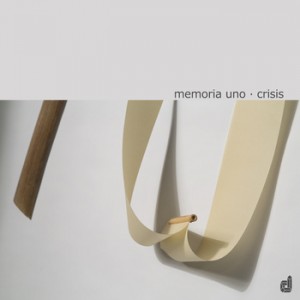Iván González (conducting)
~40 musicians (playing pretty much everything)
[i.e. too many to list here, see below for the full roster…]
Conducción #4
Conducción #5
Conducción #8
l’Ateneu Barcelonés, Barcelona 18th June 2014
Okay, any line up that has a five-strong cello section is clearly serious about getting a hefty sound (I could have mentioned the six violins, or even the four basses but hey, I like cellos). The point is, this is a big band. Thirty-nine musicians and on the second track, they even needed two conductors – hardly surprising, I suppose, I’ve been to a lot of concerts that were less well-attended.
Still, large it may be, but the unifying spirit here lies in the baton of Iván González. I’ve seen Señor González perform live many times (trumpet) and he’s a great texturalist. Not one to step forward and hog the limelight with searing solos, the impression I get is that his contributions are always in service of the music. I imagine this apparent absence of ego works well in terms of directing what is effectively a 39-way improvisation, to draw beauty and subtlety from potential chaos. As the maestro Agustí Fernández says in his liner notes, the improvised nature of the music – in which the conductor may give direction but the musicians, when prompted to play, have their freedom – leads to an unpredictable creative dialogue. Without prepared notation, the conductor’s job is to weave something out of a variety of textures – and that brings us back to what I’d say is Iván González’s forte.
For such a large ensemble (I’ve been to l’Ateneu, they must have been roped together to all stay on the stage!) the beginning is remarkably quiet – some strings, some prepared piano – and in fact, although there are moments of glorious frenzy, the whole album has an air of restraint and control. That said, the initial couple of minutes have an air of suppressed violence, with more than a little menace supplied by the gradually emerging and encroaching variety of brass and woodwind. Almost a third of the way into the first piece and we get the first dramatic (Hitchcockian?) fanfares: veritably ‘big band’ but just a little twisted. Soon, the chaos ebbs and new sounds, new voices emerge: off-kilter violins, insistently non-idiomatic percussion…
The second track begins with some angular plucking from the ample string section, before a meditative, almost pretty piano section is gradually overtaken by sinister bass and floating muted trumpet(s). There’s no real place to relax here, and nor should there be. The performance demands the attention it absolutely deserves. Pretty soon, we’re into a momentarily volume-driven passage before that breaks down into a series of different horns, all threaded together by below-the-surface piano. At around the six-minute mark the growing sonic beast emerges from its cocoon to reveal not a butterfly, but the soundtrack to the most terrifying fairy tale you ever heard in your life.
Beginning with delicate percussion, the third piece soon adopts a more sweeping, lush character, utilising the extended horn section in unison, driven by practically martial drumming. Fade back to a piano and flute interlude that is soon enough surrounded by the return of both drummers and all that brass, just reminding us that they’re still lurking on the periphery. Before this track is done, we get a ‘kitchen sink’ moment during which I highly doubt anybody was standing idle. At times the sound is so oppressive it goes beyond and becomes positively relaxing. Don’t ask me how, it just does.
Put simply, it’s quite a feat that from such a large group of noise-makers, what emerges is so clear, so unmuddied, so delicately structured. However… don’t get me wrong. This is NOT easy listening. As the listener, you’re cast adrift in an open boat and the seas are most definitely choppy, the weather stormy, and a degree of concentration is required to prevent you capsizing. So, to sum up? It’s ambitious, certainly, and in places, quite filmic (although probably the kind of film you should watch with the lights on). As a recording of a free/improvised music performance, it’s on a rarely-seen grand scale that demands respect. But maybe the best summary I have at the moment (other than, go listen to it!) is that it’s a heavenly musical portrayal of hell – a beautiful descent through various circles of disturbance that shouldn’t be missed.
“Crisis” by Memoria Uno is available to download from Discordian’s Bandcamp page or physical copies of the CD can be had from Iván González direct, contact him via rubencin_83@hotmail.com.
(After posting a link on Facebook, Elena Márquez directed me to her photos of the session, it looks like they took over the whole hall; no need for the ropes!)
Full list of musicians:
Ivo Sans, Carlos Falanga (drums)
Marc Cuevas, Alex Reviriego, Johannes Nästesjö, Nicola Lancerotti (bass)
Marco Mezquida (piano)
Julián Sánchez, Pol Padrós, Alvar Monfort (trumpet)
Darío García (bass trombone)
Aram Montagut (tenor trombone)
Amaiur González (tuba)
Marcel·lí Bayer (alto sax, bass clarinet)
El Pricto (alto sax, clarinet)
Sergi Felipe, Tom Chant, Gonzalo Levyn (tenor & soprano saxophones)
Joan Mas (baritone sax)
Luiz Rocha, Pau Domenech (bass clarinet)
Valentin Murillo, Juan Saez, Gerard Marsall (flute)
Alfonso Fernández (bassoon)
Joäo Silva, Gessami Martín, Stefan Pöntinen, Javier Lecha, Alba Navarro, Violina Pauleta (violin)
Alicia Dominguez, Miriam Fernández, Fina Izquierdo (viola)
Jordi Claret, Margarida Mariño, Sandrine Robillard, Pilar Rueda, Ana Karent (cello)
Albert Cirera (also conducting, track #2)

3 thoughts on “Memoria Uno – Crisis”
Comments are closed.